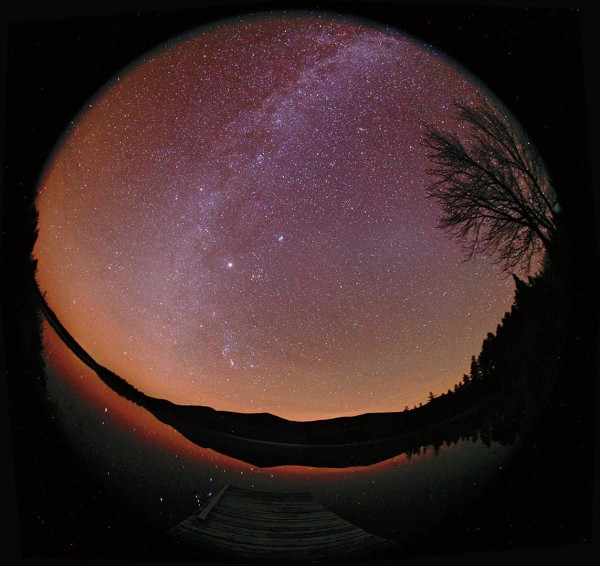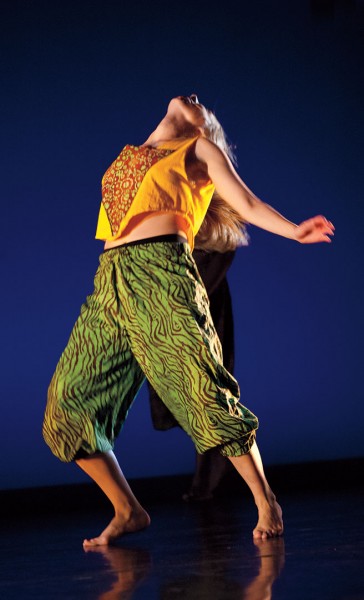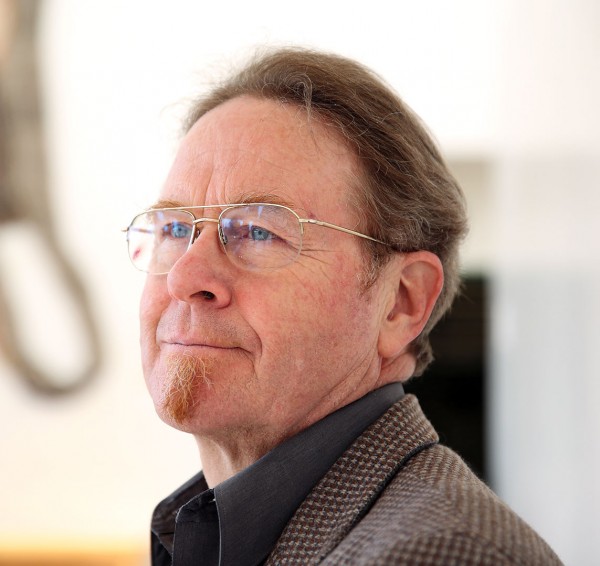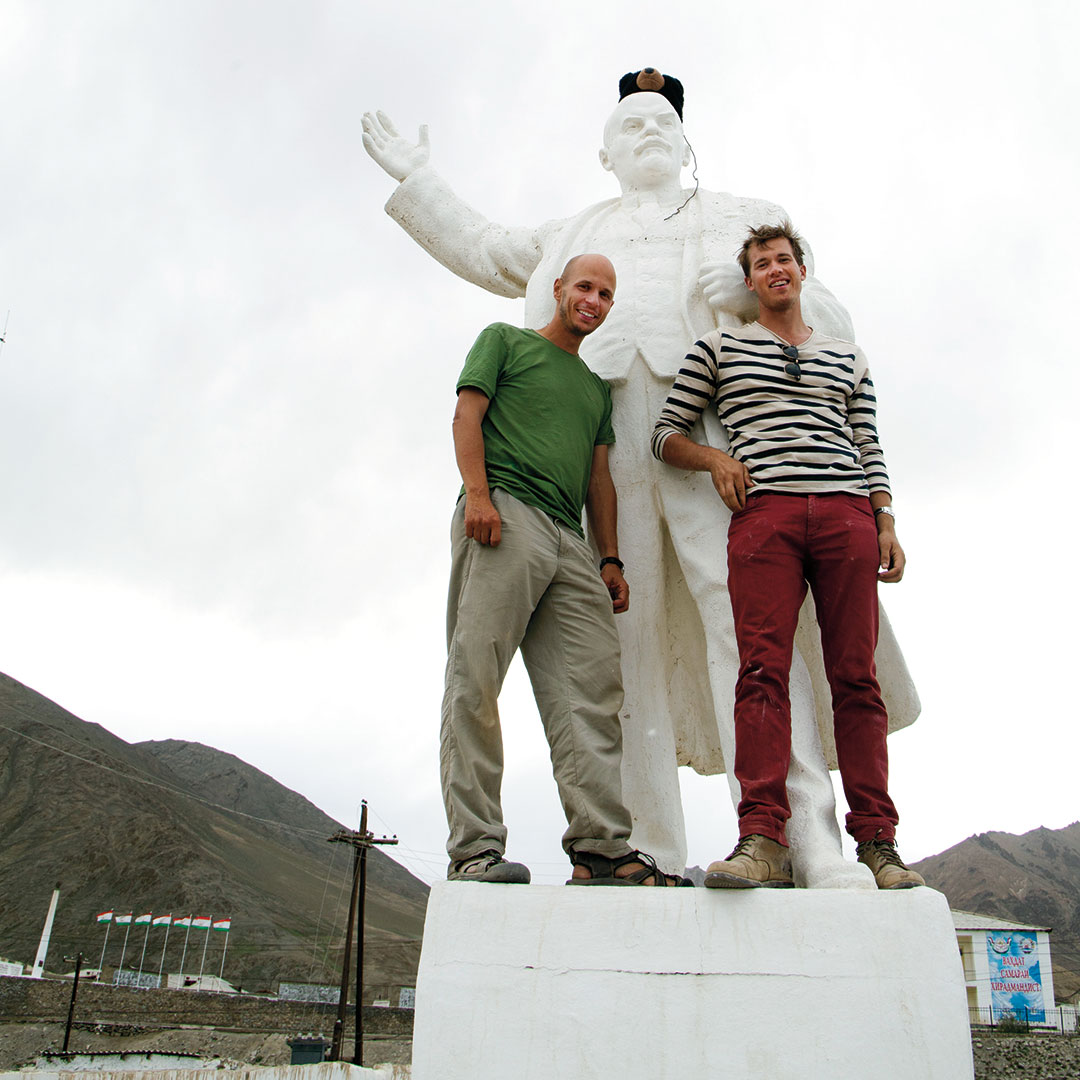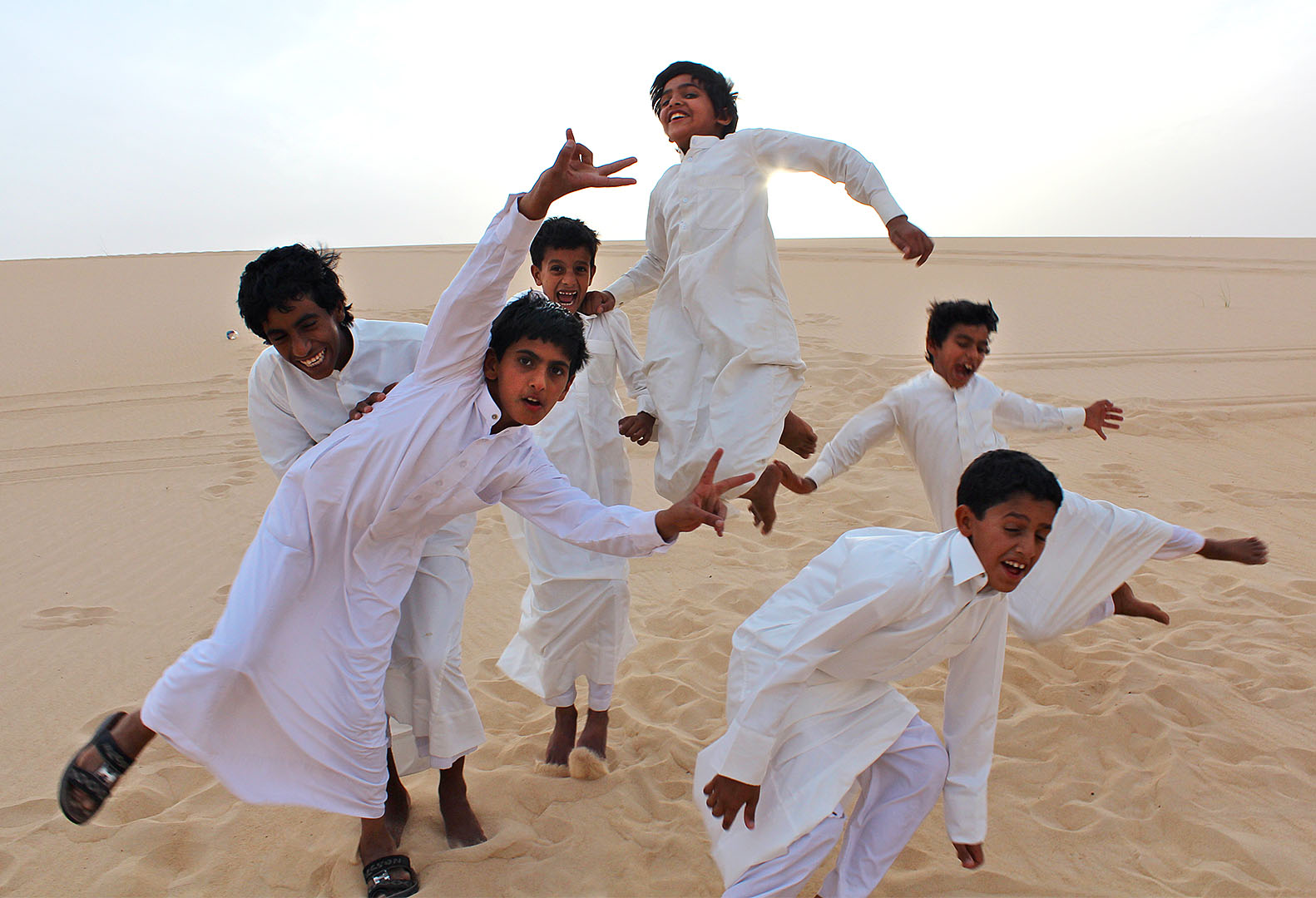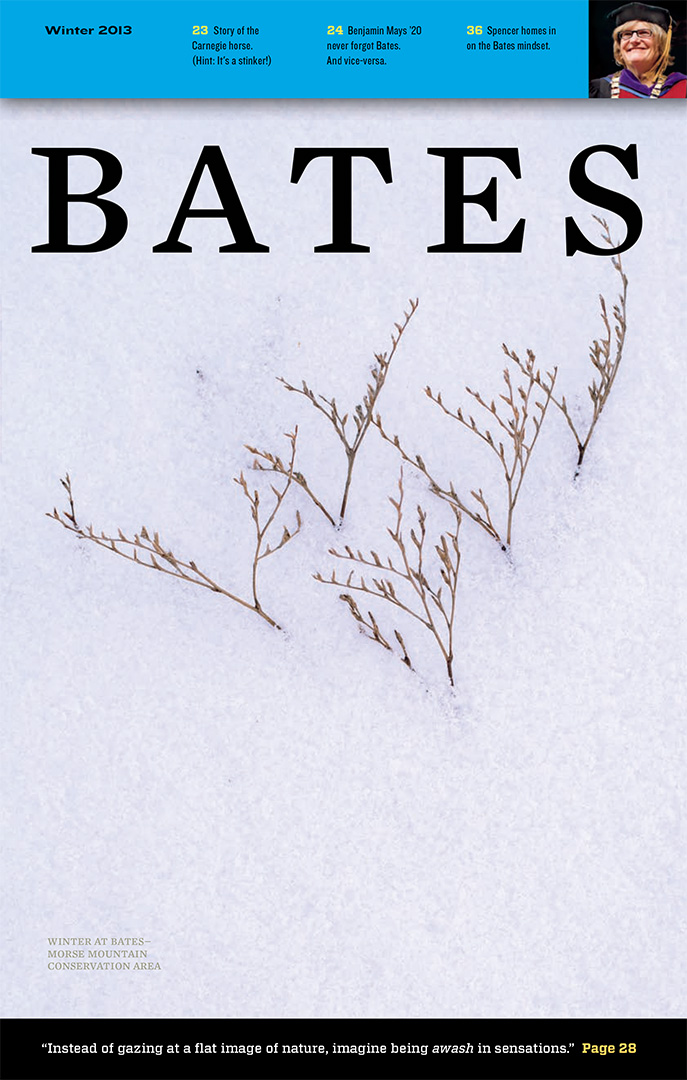
Bates in Brief Arts & Culture: Astrophotography in Northern Maine
Shooting Stars
By Doug Hubley
On the first night of a backwoods workshop dedicated to night-sky photography, the weather was clear and a motionless pond mirrored the heavens.
“I spent a few minutes just looking down into the lake,” says Will Strathmann ’13, of Newtown Square, Pa. “I got the same feeling of seeing the sky. I had a little vertigo, and it was very surreal, but stunningly beautiful.”
Strathmann captured that beauty in the panoramic photograph shown above. He was one of 10 students, faculty and staff in the Bates workshop held at West Branch Pond Camps, nearly four hours north of campus and some 10 miles east of Kokadjo, Maine.
Leading the workshop was Babak Tafreshi, a journalist, photographer and champion of the night sky. Born in Iran, Tafreshi was one of the artists in Starstruck, the 2012 Bates Museum of Art exhibition that was one of the first to treat astrophotography as an artistic genre.
“Being in the right place at the right time.”
Images by Tafreshi, who photographed the circular “fisheye” image above and whose clients include National Geographic, frame the night sky with the ground-level landscape, a genre called landscape astrophotography. “The trick,” he says, “is being in the right place at the right time.” Hence the workshop location: First West Branch Pond, ringed by mountains and trees, for that framing effect.
Still better is its freedom from the light pollution that obscures the stars in so much of the developed world. With an open sky for three of the workshop’s four nights, the lack of light pollution “let us see the Milky Way very stunningly,” says Tafreshi, as well as usually invisible phenomena such as zodiacal light, a faint heavenly glow around sunrise and sunset caused by space dust reflecting the sun’s rays.
Sacrificing shut-eye for shutter time, the group shot all night and spent the daytime editing their digital images. Tafreshi explains that landscape astrophotography can be done with quite ordinary, if judiciously chosen, gear — namely good tripods and fast, wide-angle lenses. “You need to get the use of any photon arriving at your [camera’s] sensor,” he says.
In between shooting, editing and catnaps, the Bates group enjoyed the hospitality of camp proprietors Eric Stirling ’97 and his wife, Mildred Stirling. The business has been in Eric’s family since 1910. “I would go back just for the food,” says Megan Lubetkin ’16 of Cape Elizabeth, Maine, who does time-lapse and star-trail photography.
But all in all, there would be plenty to go back for. “It was just so serene,” says Lubetkin. “The lake was so pristine, there was no one else around, and it was just untouched. It was perfect.”
Arts & Culture Facts
In October, singer Dev’s concert rider asked for cough drops, sugar-free Red Bull and beef jerky.
Faculty composer Hiroya Miura premiered a work based on cosmic radiation patterns.
Trumpeter James Jhun ’16 played a fanfare for President Spencer’s arrival at the Inaugural Reception.
Artist-in-residence Dawoud Bey will set up studio in a former Lewiston mill building during Short Term.
A dance by professor Rachel Boggia incorporates video of her father training a horse.
Rhythm-n-Roots
Kirsten Pianka ’13 of Cleveland performs the dance “Rhythm-n-Roots” last fall, choreographed by guest artist Robin Sanders.
Sanders taught her Bates dancers classic hip-hop techniques like popping and tutting, and related hip-hop to traditional West African dances.
A Little Afternoon Music
An assignment to write music for a college president’s inauguration is an honor, for sure, but can be fraught with more than the usual load of expectations.
William Matthews, the Alice Swanson Esty Professor of Music, has composed music for three inaugurations at Bates and one elsewhere. The music must be something, he says, “that can be performed by undergraduates with limited rehearsal time, will inspire a lay audience, will please the dedicatee, reflects musical styles of our time and reflects our institutional values.”
For President Spencer’s Oct. 26 installation, Matthews composed a setting for “The House Was Quiet and the World Was Calm,” a Wallace Stevens poem that Spencer selected. Scoring it for the college’s orchestra and choir, he included a neat twist to emphasize the “world” concept: recitations by three students in their native languages, Urdu, Nepali and Korean. — DLH

